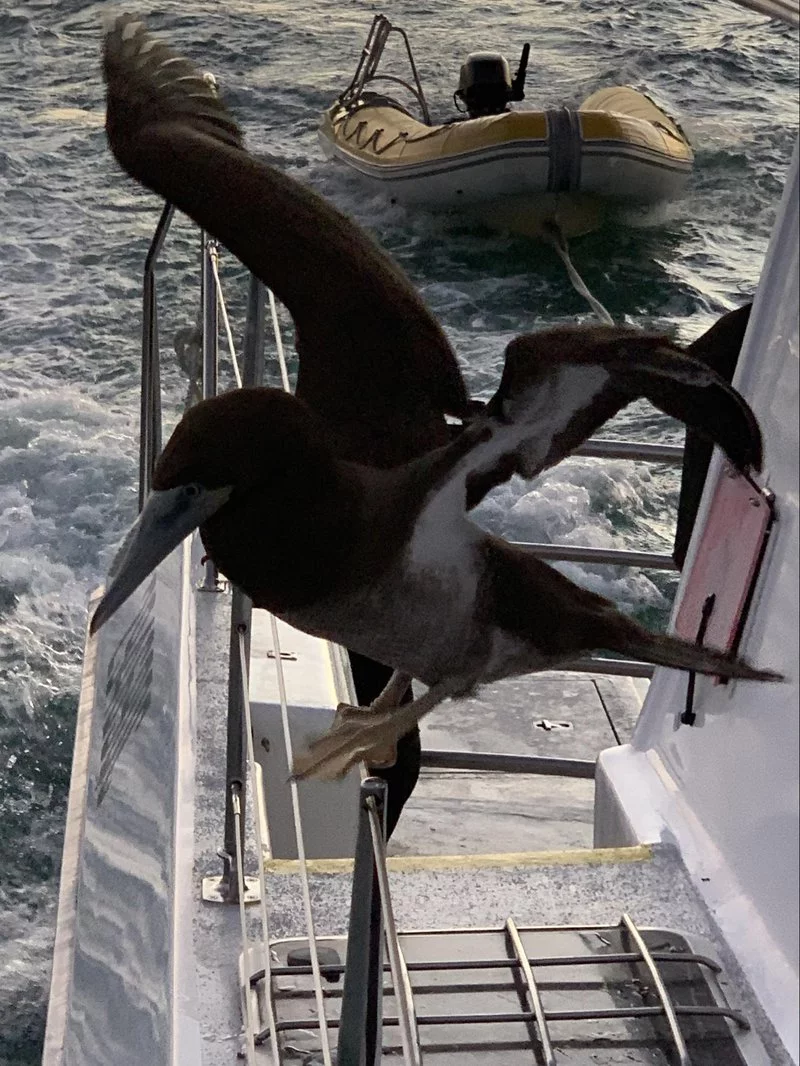Of the six species of boobies in the world the brown booby is one of the most commonly seen and widespread family, Sulidae. It is thought that these birds got their name from the Spanish term bobo which means stupid. The reason for this not so kind reputation is their lack of fear of humans and their habit of landing on ships out at sea to some rest which made them very easy to catch and be eaten as fresh meat was hard to come by on a long voyage.
The brown booby is the title of the smallest of the booby species with an average body length of 65-75 centimeters and a wingspan of 130-150 centimeters. Their plumage is dark brown on the back, upper wing, upper breast, head and throat. The lower part of their breast and underside are white. They are not sexually dimorphic which means both males and females of the species appear remarkably similar. One of the only ways to tell the sexes apart is by the bill colouring, bills are cream/grey and in males the base is deep blue. Females are also slightly larger.
These guys are distributed in tropical regions all over the world. As a sea bird they are mainly
seen on the coastline or flying over the ocean. They are not as migratory as other sea birds and
most tend to stay close to breeding islands. These islands are usually tropical and continental
islands, sand cays and atolls. In Australia, this species can be found from the Pilbara region in
Western Australia, north around the top and down to the Bunker Island group at the southern end
of the Great Barrier Reef in Queensland.
The islands they breed on are usually predator free and the boobies will nest in colonies. During
breeding the male will select the nest site usually on a sandy beach or rocky cliff on a flat
patch with little to no vegetation. Once a site has been selected both the make and female will
build the nest together. They will use whatever materials are available to them like branches,
feathers and even human rubbish. These nests on average are from 30-45 centimeters wide. After
the nest has been built the female will then lay between 1-3 eggs and will hatch after 42-45
days. Incubation and care of the chicks is shared between both the male and female. While one
stays with the nest the other will fly off in search of food.
The diet of the brown booby consists mainly of fish, crustaceans and squid including anchovy.
Prawns and shrimp. While hunting they will soar above the water and once they have spotted a
tasty meal will rapidly dive, for such large birds they are surprisingly agile and aerobatic.
Once they hit the water they use their webbed feet and wings to swim beneath the surface and
capture their prey.
Human impacts such as land clearing, important historical breeding ground have been lost which
has led to brown booby populations steadily declining. However the IUCN still lists the species
as “least concern”. They are also extremely vulnerable to introduced predators such as foxes,
rats and feral cats as they are a ground nesting species.
If you are boating in the Whitsundays you may be lucky enough to spot one of these large sea
birds soaring over the water in search of food. You may even have the honour of one landing on
your boat for a bit of respite after a long flight. If this happens the best thing to do is to
give the bird some space to ensure it is stressed as little as possible so that it is able to fly
off healthy and happy when it is ready.

